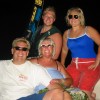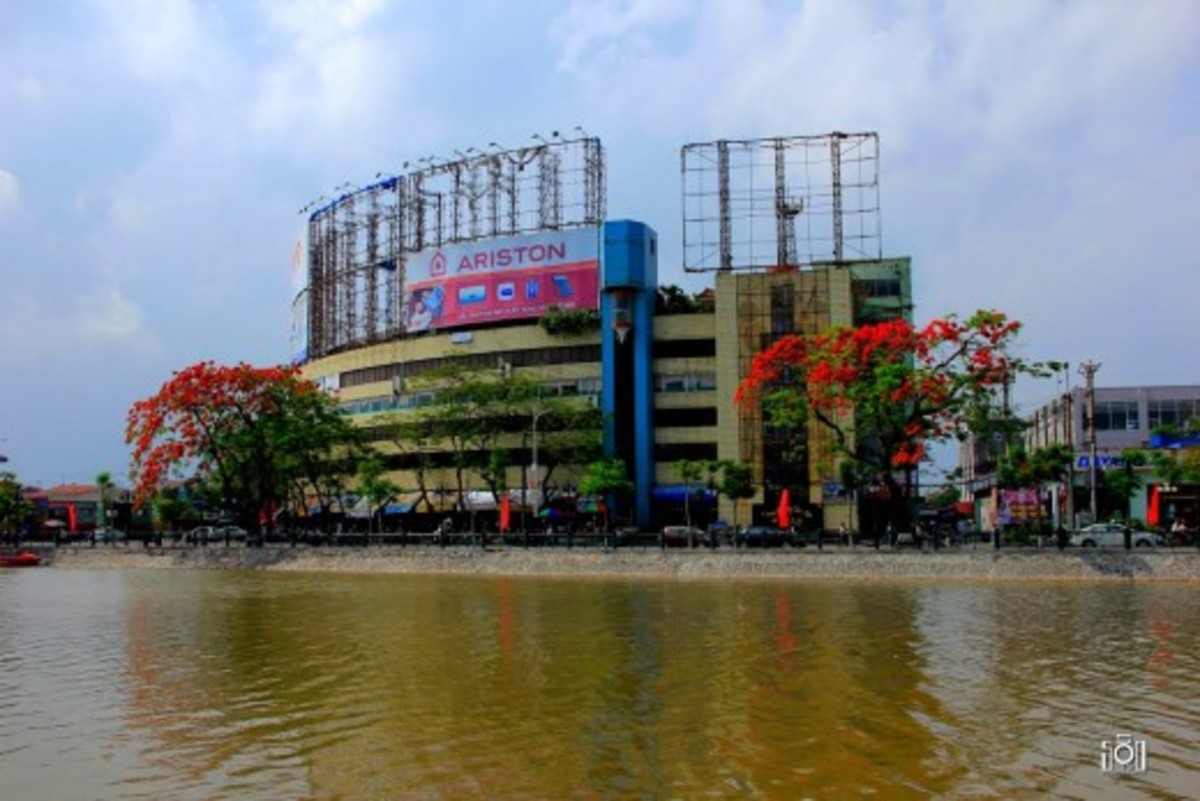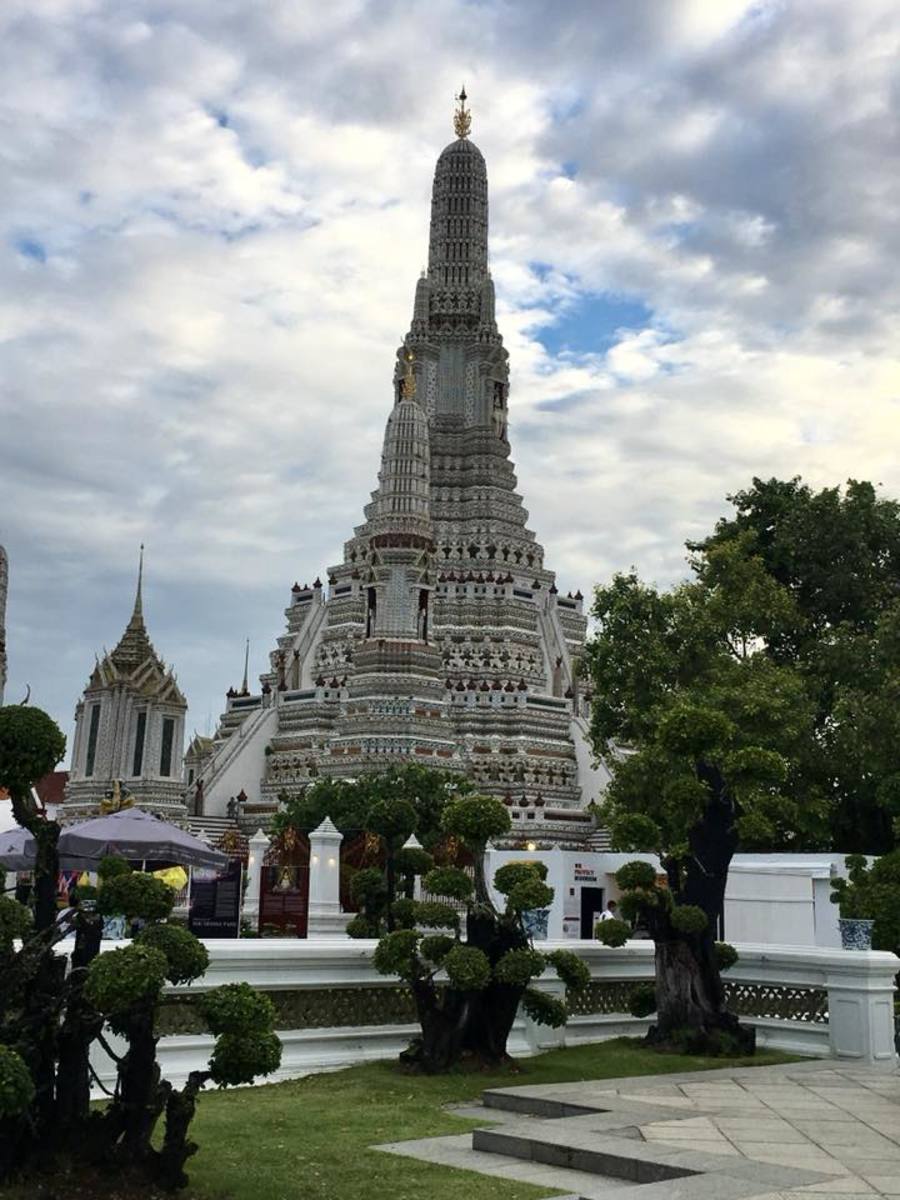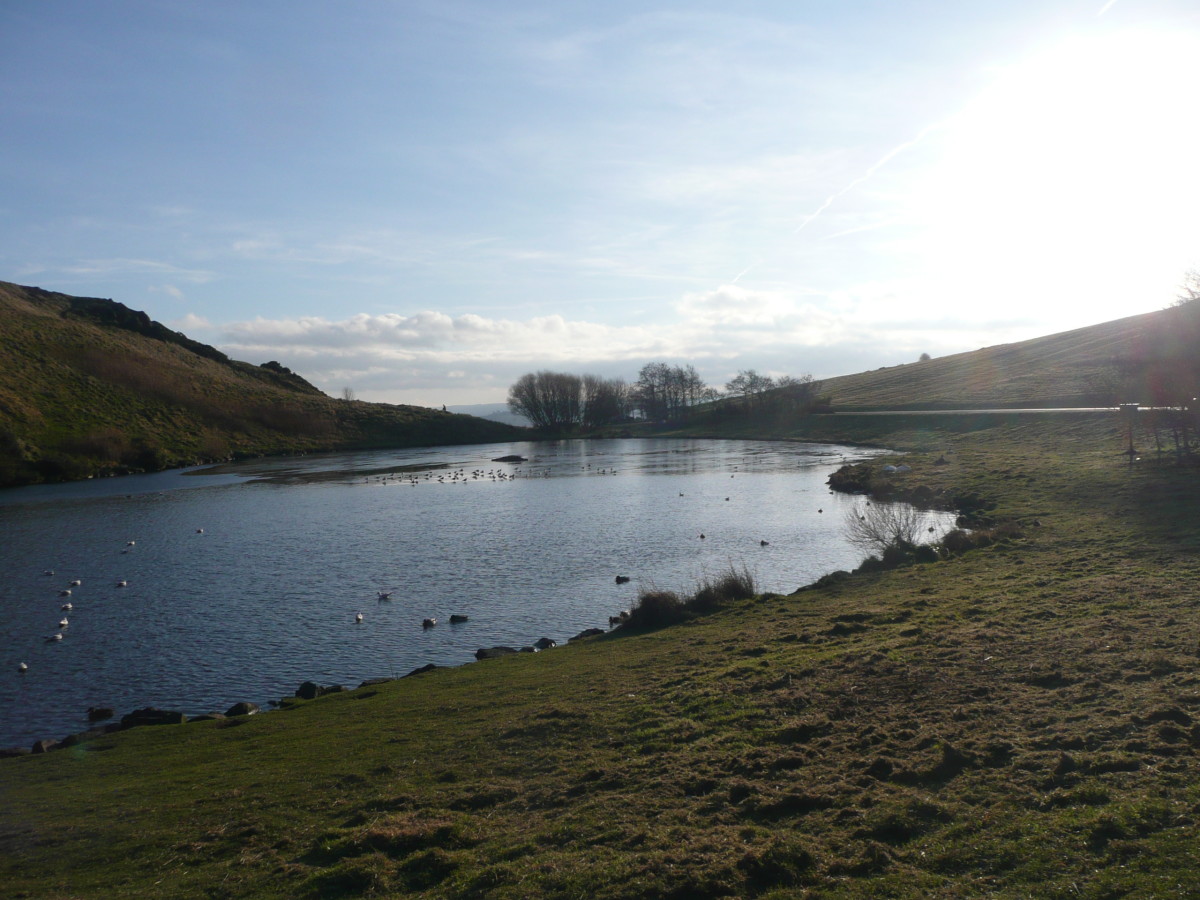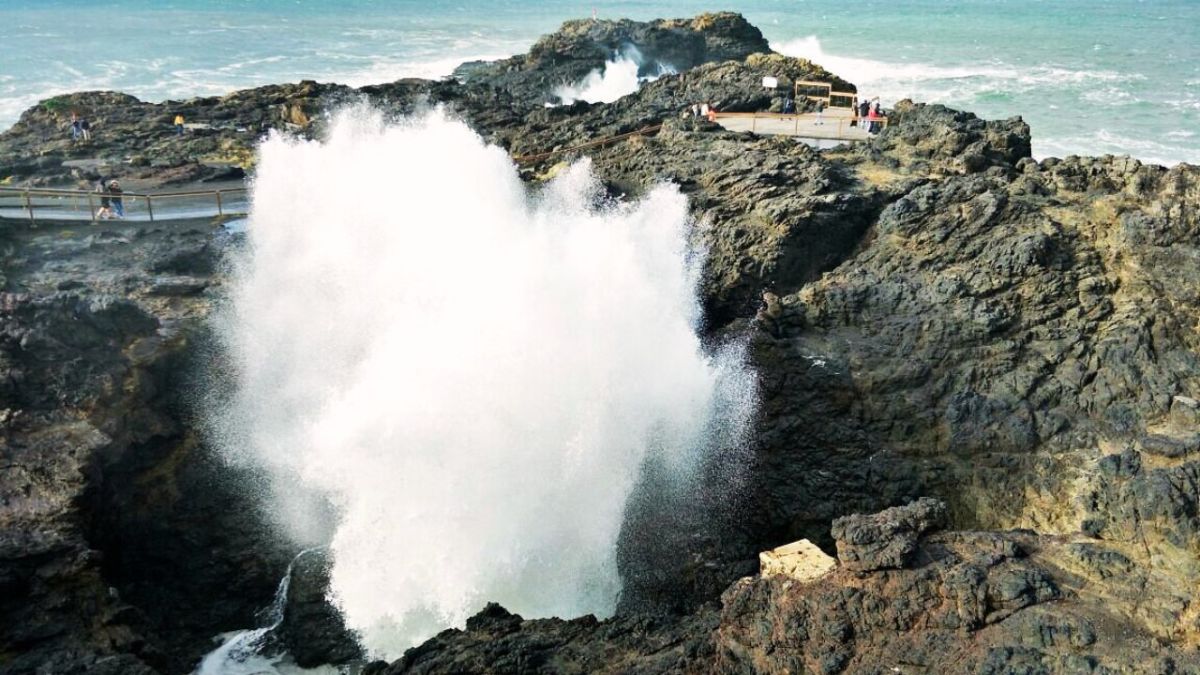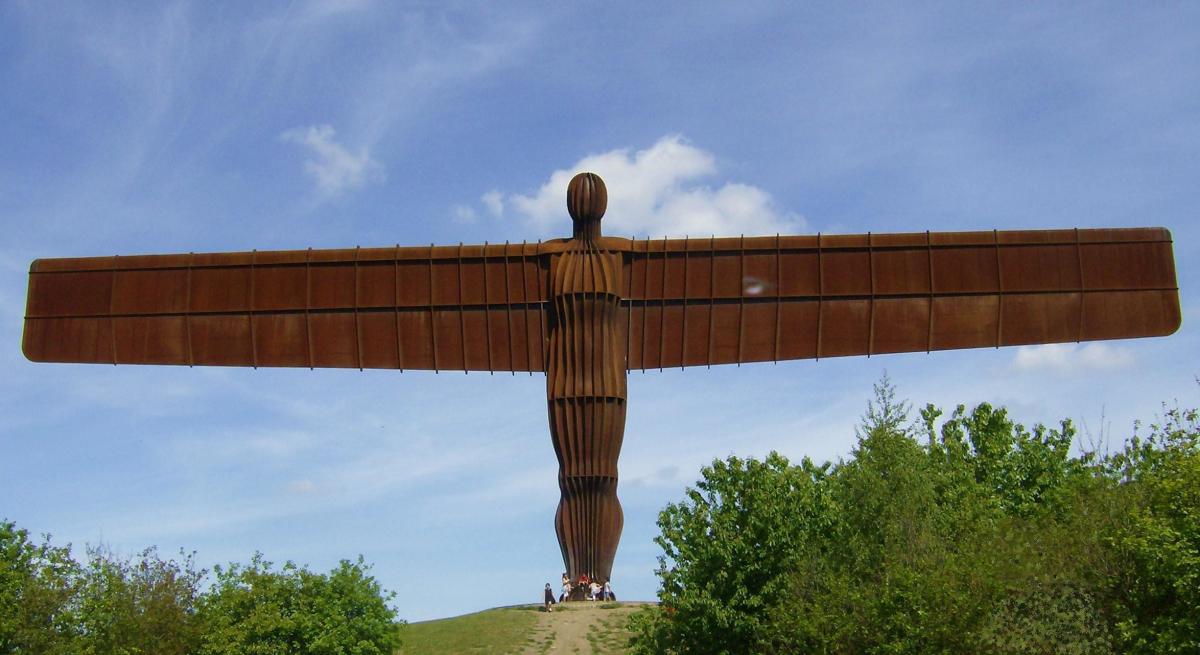Temple Square in Salt Lake City
Salt Lake City Utah
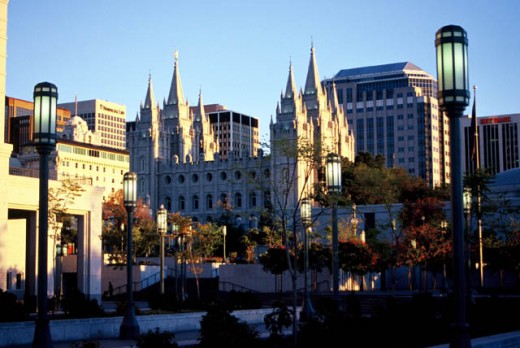
Salt Lake City is a favorite vacation destination
One of the most spectacular places to visit when it comes to Utah is the state capital, Salt Lake City. Salt Lake City is filled with loads of historic, cultural, educational, and shopping adventures. The surrounding area provides sporting activities such as, snowboarding, and skiing in the winter, and hiking and climbing in the summer. Salt Lake City Utah is a great place for a vacation destination.
Welcome to Salt Lake City
Temple Square attractions to see in Salt Lake City.
When you go to Salt Lake City, no matter what your religious views are, it is a must that you visit the sights at Temple Square. Probably the most popular tourist spot in Utah, the three city blocks in downtown Salt Lake City that make up Temple Square have almost 20 different attractions to choose from.
Christmas in Salt Lake City is also a great time to visit Temple Square. The grounds are decorated with thousands of Christmas lights and Nativities are displayed from all over the world.
Map of Temple Square
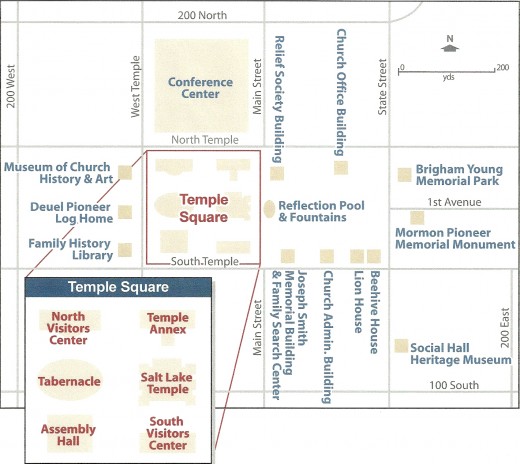
Things to see at Temple Square
- The Salt Lake Temple
- The Temple Square Visitors Centers
- The Salt Lake Tabernacle
- The Assembly Hall
- The Family History Library
- The Museum of Church History and Art
- The LDS Conference Center
- The LDS Church Office Building
- The Bee Hive House
- The Lion House
- The Joseph Smith Memorial Building
Salt Lake LDS Temple
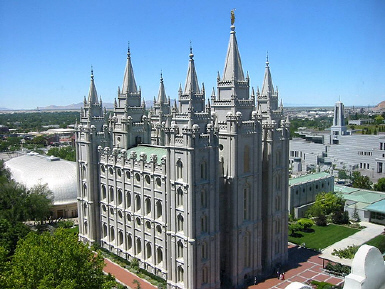
The Salt Lake LDS Temple
The Salt Lake Temple
The Salt Lake Temple is recognized the world over as the symbol for The Church of Jesus Christ of Latter-day Saints. This magnificent building took over 40 years to build by pioneer settlers who came to the valley in July of 1847. After the first few years of struggle to survive in this unsettled territory passed, the faithful members of the Mormon Church started to dig the foundation and construct this grand edifice. They began in 1853, and completed it in 1893.
Made from the granite quarried from the Little Cottonwood Canyon, which is 20 miles southeast of Salt Lake City, the Salt Lake Temple is the largest of the LDS Temples. The six distinctive spires add to the Gothic design of the Temple itself. Positioned on the east central spire is a large gold statue of the Angel Moroni.
Although entrance inside the Salt Lake Temple is reserved for members of The Church of Jesus Christ of Latter-day Saints, all visitors are welcome to tour the grounds and see the stunning workmanship of the outside of the building and the surrounding grounds.
The Angel Moroni
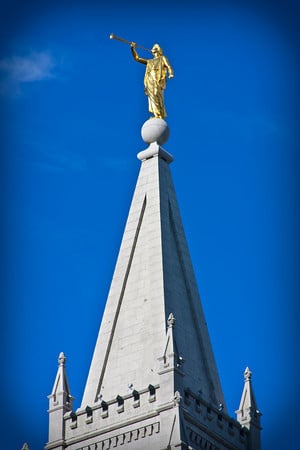
Sunstone on the Salt Lake Temple
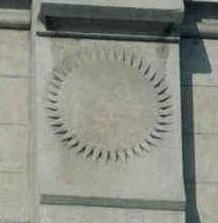
The Moonstones
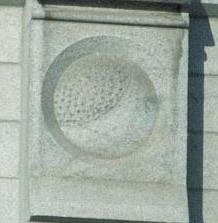
The Starstones
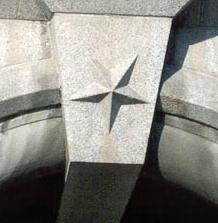
The Handclasp
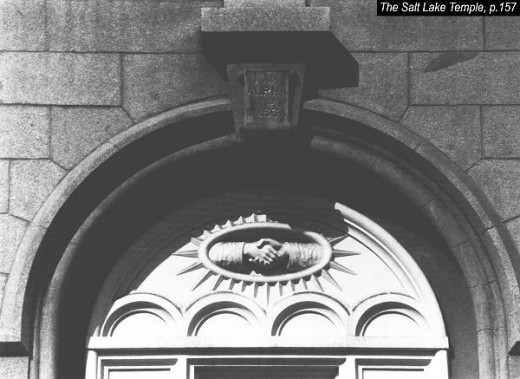
The All-Seeing-Eye
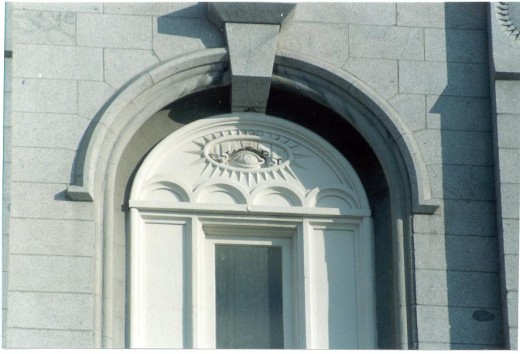
Things to look for on the outside of the Salt Lake Temple
Just because access to the inside is limited, is no reason not to visit the Salt Lake Temple. There is a ton of Temple Symbolism to look for on the outside of the building too.
Here are some things to look for :
- The Angel Moroni- The angel Moroni represents the messenger that brought the restoration of the gospel of Jesus Christ by way of The Book of Mormon to the Prophet Joseph Smith. He heralds the Second Coming of Jesus Christ.
- The Towers- The six towers that rise from the building represent the leadership of The Church of Jesus Christ of Latter-day Saints. The three towers on the east representing the First Presidency of the Church and the higher priesthood, also referred to as the Melchizedek Priesthood with twelve pinnacles rising out of the them representing the Twelve Apostles of the Church. On the west side the three towers represent the leadership of the Aaronic Priesthood, or lesser priesthood, which is the Presiding Bishopric. The twelve pinnacles on this side represent the High Council.
- The Battlements- The battlements that surround the Temple itself offer a barrier of protection from the influences of the world. They symbolize a separation of worldly ideas from those of holy ordinances that take place inside the walls of the Temple.
- The Earthstones- Located at the base of each buttress are the carvings of the earthstones. These symbolize the earth as the “footstool of God”.
- The Moonstones- The Moonstones are located directly above the earthstones. The moon is seen in various phases depending on its position around the Temple. The changing moon represents the stages of human progression, or the journey from darkness into light.
- The Sunstones- Above the moonstones are the beautiful sunstones depicting the glory of the sun, or the highest degree of glory.
- The Cloudstones- On the east center tower, above the sunstones, are two clouds with descending rays of light. This is symbolic of the Old Testament reference to the temples in ancient Israel as they were filled with the “cloud of the Lord”.
- The Starstones- There are two different types of starstones on the Salt Lake Temple. The six pointed stars represent the stars in the heavens, while the upside down five pointed stars represent the morning stars, and are compared to the “sons of God” which are spoken of in the scriptures.
- The Big Dipper- On the west center tower you will find the carving of the Big Dipper. This constellation is used to locate the North Star, which was a star used by travelers for years helping them to keep on their true course.
- The Handclasp- On the center towers can be seen the carving of the pair of right hands clasped in the “right hand of fellowship”. This represents the act of covenant making, which is the very essence of temple worship for the Latter-day Saints.
- The All-Seeing-Eye- Finally the all-seeing-eye can be seen atop each of the center towers representing God’s ability to see all things.
Temple Square Visitors Centers
The Christus in the North Visitors Center
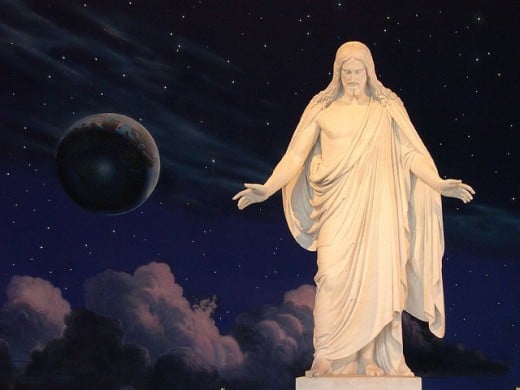
North Visitors Center
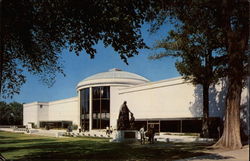
Temple Square Visitors Centers
On Temple Square there are two visitors centers that not only give a history and facts about the Temple, but also give a brief overview of the beliefs of the Mormons.
The highlight of the South Visitors Center, which is located just across the courtyard on the south end of Temple Square, is the presentation of the history of the actual building of the Salt Lake Temple. Beautiful exhibits depict the story of the struggles of the early pioneers as they sacrificed to build the Temple, the dedication of the Temple, and the architectural plans which were designed by Truman Angell. There is an area which also explains the views the Mormons have on the importance of the family unit, and provides instructions on how to strengthen families.
The North Visitors Center is the larger of the two and is located just north of the Tabernacle. This visitors center has two floors. On the upper level is a 14 square foot replica of Jerusalem during the time period of the New Testament. It is an interactive display with over 4,000 miniature structures. Also on this floor are many murals that are painted depicting the life of Jesus Christ.
On the second floor of the visitors center are two theaters where the historical drama, Legacy, can been seen. This movie depicts the struggles that the early pioneers of The Church of Jesus Christ of Latter-day Saints had as they faced persecutions and hardships while they sought to worship as they believed. There are also additional presentations available that teach about the story of the Prophet Joseph Smith, and share scriptural stories from both the Bible and the Book of Mormon. This visitors center is a good place to get an understanding of core beliefs the Mormons have.
Perhaps the most spectacular thing about the North Visitors Center however, is the 11 foot statue of Jesus Christ that is visible as you enter the center. “The Christus” is an exact replica of the one made by the Danish sculptor Bertel Thorvaldsen.
The MormonTabernacle
Mormon Tabernacle Organ in the Tabernacle
The Mormon Tabernacle Choir
The Salt Lake Tabernacle
Another important stop in your visit to Temple Square is the Salt Lake Tabernacle. This building is famous for its egg like shape and its remarkable acoustics. Conceptualized by Brigham Young, the Tabernacle took 12 years to build, being finished in 1875. Microphones or other amplifying devices were not available during that time period, so Brigham Young tried to make the building resemble the roof of a mouth, wherein sound is amplified. The domed roof was made by employing bridge building techniques. The self-supporting roof was created by using steam to bend the massive beams for the construction. When a pin is dropped on the floor close to the podium, you can hear the sound throughout the whole building. This is actually demonstrated during the tours that are given daily by LDS Missionaries.
Another incredible feature that is seen at the Tabernacle is the Tabernacle Pipe Organ. With 11,623 pipes it is considered one of the world’s largest pipe organs. Because of the great acoustics and the beautiful pipe organ, the Tabernacle is the perfect place for the Mormon Tabernacle Choir to call home. Besides the free daily tours that are given of the Tabernacle, the public is welcome to attend choir rehearsals on Thursday evenings, and a program called “Music and the Spoken Word”, which is a broadcast that features the Mormon Tabernacle Choir, on Sundays at 9:30am., absolutely free.
The Salt Lake Tabernacle
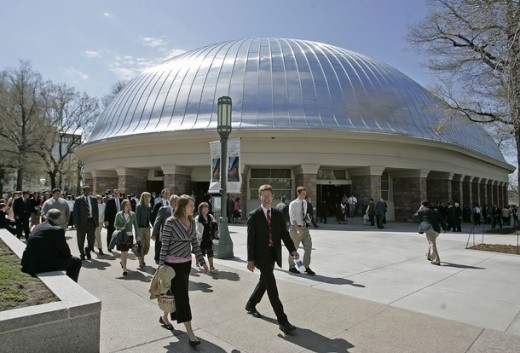
Temple Square Assembly Hall
The Assembly Hall
The Gothic styled Assembly Hall is also part of Temple Square. Started in 1877, and completed in 1880, the Assembly Hall is adorned with over 40 stain glass windows. The building material used was the granite that was discarded from the construction of the Salt Lake Temple. The Assembly Hall is used today for the Temple Square Concert Series, which is presented every Friday and Saturday evening. This series features concerts given by local and international artists. There are no tickets required, and the concerts are free to anyone eight years of age or older.
The Salt Lake Assembly Hall
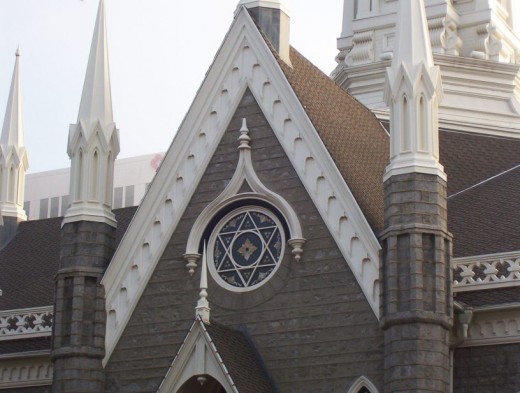
The Family History Library
The Family History Library
Across the street from the Assembly Hall is the LDS Family History Library. This five story building houses the largest collection of genealogical records in the world. With genealogy becoming the number one hobby in America, The Family History Library is easily one of the most visited sights in Salt Lake City.
The Family History Library is open to the public and is free of charge. There are more than 230 full-time professionals on staff, and about 200 well trained volunteers ready to help anyone who visits, with their genealogical research.
The Family History Library
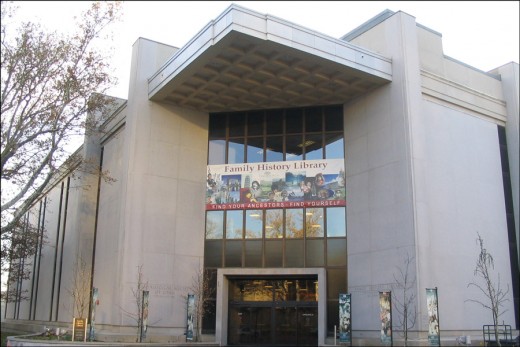
Family Travel Destination the Family History Library
- Genealogy tourists flock to Salt Lake City - Travel - Family Travel - msnbc.com
The Family History Library is visited by some 700,000 people annually and is widely considered the world's largest repository of genealogy records.
Things to help you in your genealogical research available at the Family History Library
- Over 2.2 Million rolls of microfilmed genealogical records
- 742, 000 microfiche
- 300,000 books, serials, and other formats
- 4,500 periodicals
- 84 patron computers
- 600 microfilm readers
- 75 microfiche readers
- 31 microfilm and microfiche copiers
- 10 book copiers
- 365 seats at tables, plus additional standing workspace
- regular orientation classes
- specialized research classes
Come prepared to spend the entire day using the resources and getting help from the trained staff, absolutely free of charge.
The LDS Museum of Church History and Art
Entrance to the Museum of Chruch History and Art in Salt Lake City
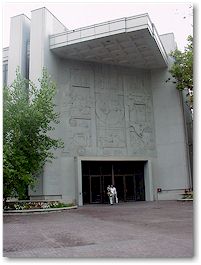
Mormon Handcart at the Museum of Church History and Art
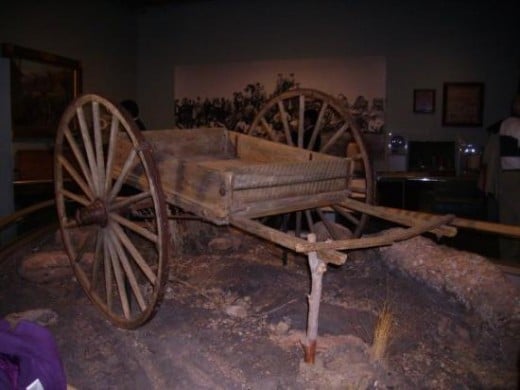
The Museum of Church History and Art
When visiting Temple Square, come prepared to spend some time at the Museum of Church History and Art, with over 63,500 square feet of museum to explore. Right next door to the Family History Library, the Museum of Church History and Art is open Monday through Friday, 9:00a.m. to 9:00p.m., Saturday and Sunday, 10:00a.m. to 7:00p.m., and the admission is free.
After Brigham Young arrived in the Salt Lake Valley he asked the Mormon pioneers to bring “all kinds of mathematical and philosophical instruments, together with all rare specimens of natural curiosities and works of art, . . . from which, the rising generation can receive instruction; and . . . we will soon have the best, the most useful and attractive museum.” This was the beginning of the collection of historical memorabilia documenting the fascinating journey that led the Mormons from upstate New York, to finally settle in Salt Lake City Utah.
Today interactive exhibits enhance your experience as you travel through time experiencing firsthand what the pioneers might have faced. Among the displays are a covered wagon, a log home, and even a ship’s bunk, making history come alive.
Other things of interest to look for might include:
- An 1830 edition of The Book of Mormon
- Brigham Young's sunglasses
- Joseph Smith's flintlock pistol, sword, scabbard and epaulettes
- A 45 star flag
- The death masks of Joseph and Hyrum Smith
Current Exhibits on display at the Museum of Church History and Art
- Current Exhibits
Includes: Mi vida, mi historia: Stories of Faith and Inspiration from Latin American Saints; The Salt Lake Tabernacle: Gathering the Saints under One Roof; I Am A Child of God; A History and Record on Plates of Glass: Photographs
Famous artists like Minerva Teichert are on display.
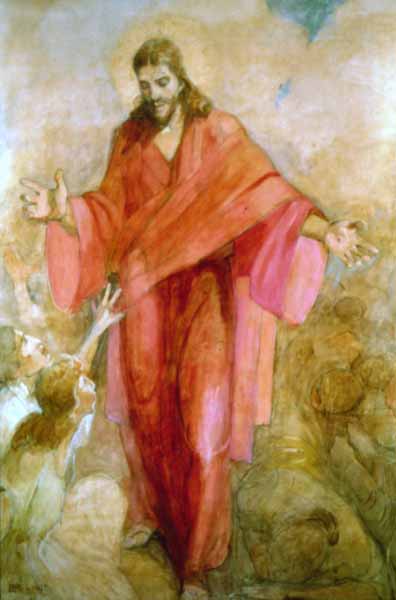
Art Exhibits are part of the museum too.
Besides the historical artifacts that can be seen in the Museum of Church History and Art, there is an extensive art collection and featured art exhibits which deal with religious topics. Many different media styles are exhibited including oil, watercolor, sculpture, stained glass, photography, and fabric. Artists are displayed representing over 30 countries of the world making the exhibits multicultural in nature.
On the third floor of the museum are kid friendly interactive displays and activities including puppet shows, films, and costumed actors. There is also a small gift shop located on the first floor where visitors can purchase hard to find books, post cards, music, videos, and other unique gifts.
The LDS Conference Center
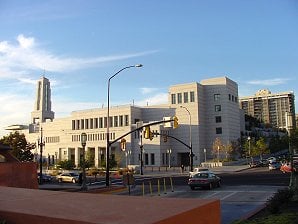
The inside of the LDS Conference Center
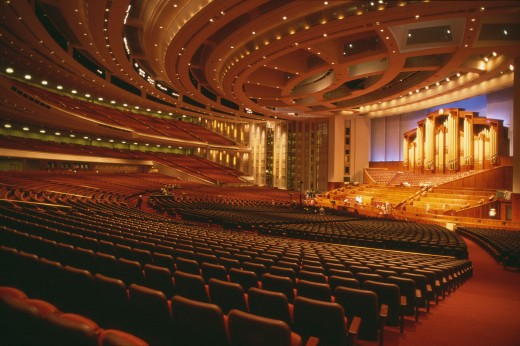
The LDS Conference Center
The Conference Center
Recognizing the need for a larger building to be used as a meeting center, because of the steady growth of the membership in The Church of Jesus Christ of Latter-day Saints, President Gordon B. Hinckley commissioned the building of the LDS Conference Center. The building is built from granite out of the same quarry which provided the granite for the Salt Lake Temple. The architectural structure of the building is amazing.
Inside the Conference Center itself there are no visible support beams giving each seat an unobstructed view. The auditorium contains 21,000 seats. It also houses a 7,667 pipe organ plus a 900 seat proscenium-style theater. Also inside the Conference Center is an extensive collection of original art pieces which are on display.
On the roof is four acres of landscaped planter boxes filled with the natural flora typical of the area.
The Conference Center is open daily for free guided tours between the hours of 9:00a.m. to 8:00 p.m., and Garden tours of the roof are only available Monday through Friday at 10:00 a.m. and 2:00 p.m. or Tuesday and Wednesday at 7:00 p.m. The tours meet inside Door 15.
The Conference Center is used twice a year as The Church of
Jesus Christ of Latter-day Saints hosts its Annual and Semi-Annual General
Conference in April and October. Here members of the Church receive teaching and spiritual encouragement from their church leaders. Other cultural and artistic shows of all kinds
also appear at the Conference Center. From November 23, 2010 through January 1, 2011, the musical production , Savior of the World, which is based on scriptural accounts of the birth and Resurrection of Jesus Christ will return for its 14th season.
Tallest Building in Salt Lake City
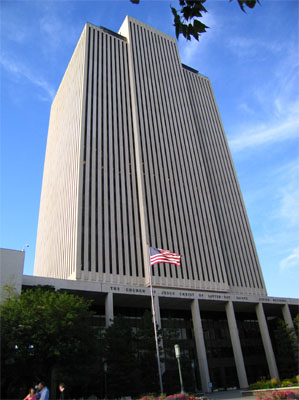
LDS Church Office Building
The Beautiful Gardens Surrounding The LDS Church Office Building
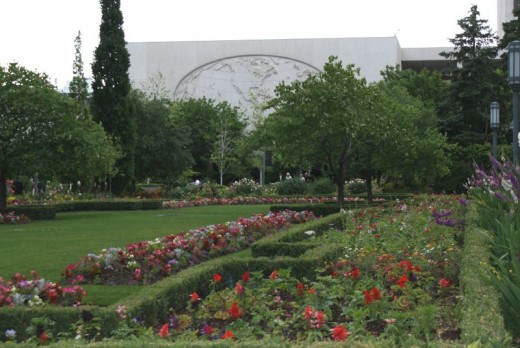
The LDS Church Office Building
Completed in 1972, the LDS Church Office Building is the tallest building in Salt Lake City, measuring 28 stories high. It is here that the administrative support staff is centrally located for the lay ministry of the Church which is seen throughout the world. It is literally the headquarters of The Church of Jesus Christ of Latter-day Saints. Known as the “COB”, the building was designed by George Cannon Young and cost $31 million to build. The Church of Jesus Christ of Latter-day Saints has become a corporation of sizable interest. Everything from the publication of the Church magazines, organization of the massive missionary effort, production of church films, the construction of Church buildings and Temples, to managing the resources for humanitarian needs happens in the Church Office Building.
Two specific areas of interest to the public in the Church Office Building are, the lobby, and the observation deck.
The lobby has a large mural depicting Jesus Christ commissioning the Apostles of the New Testament to preach the gospel message throughout the world. Also in the lobby is a large statue picturing a pioneer family, a husband and wife burying an infant child, with the inscription, "That the struggles, sacrifices and the sufferings of the faithful pioneers and the cause they represented shall never be forgotten", beneath.
The observation deck is on the 26th floor and is open to the public Monday through Friday 9:00a.m. to 4:30p.m. and is free of charge. From this deck the beautiful Wasatch Mountains, the overview of the Salt Lake Temple with its surrounding Temple Square, and the majestic Salt Lake City Capital building, can be seen.
The gardens that surround the LDS Church Office Building are a sight to see by themselves. They are traditionally replanted every six months with unique and exotic plants. Take a tour of the garden, meeting at the lobby, every Monday through Friday at 10:00 a.m. and 2:00 p.m., and Tuesday and Wednesday, 7:00 p.m. Sunday tours meet at 10:15 a.m. at the east gate of Temple Square. All of the tours are free of charge.
The Bee Hive House
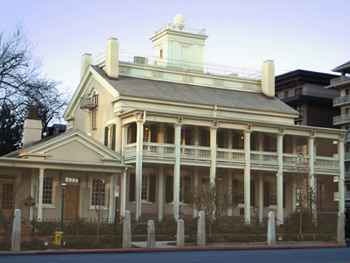
The Bee Hive House
The Bee Hive House
One of my favorite places at Temple Square to visit is the darling Bee Hive House. Perhaps it is because I am a collector of Bee Hives, and there are a lot of them at the Bee Hive House, or maybe because I love that the Bee Hive represents “industry and harmony”, but nevertheless I always have to visit the Bee Hive House when I am in Utah. The Bee Hive House was the primary residence of Brigham Young during his tenure as president of The Church of Jesus Christ of Latter-day Saints, and governor of the Utah Territory before it became a state. On top of the house you can see a large bee hive which stood for the State of Deseret, a term defining early Utah.
Only two of Brigham Young’s wives lived there with their families, Mary Ann Angell Young, and Lucy Decker Young. They were in charge of maintaining a place where Brigham Young could entertain the distinguished guests that would visit the City of Salt Lake. The Bee Hive House is a museum that preserves the way the Young family lived back in 1855. Included in the house are a play room, a washroom, a kitchen, a family store, a bedroom, and a gathering room. All of these areas can be seen on a free tour that take place Monday-Saturday 9:00a.m. to 9:00p.m., beginning every 10 minutes.
The Lion House
Famous Lion House Recipes
The Lion House
Directly next door to the Bee Hive House is The Lion House. The Lion House is another elegant mansion that belonged to Brigham Young also. It was in the Lion House that several of Brigham Young’s polygamist wives and their families lived. Brigham Young was known as “the Lion of the Lord” which was his nickname. The Lion House, built by Brigham Young has a large reclining lion statue over the front entrance of the house giving the house its name.
Today The Lion House is a social center, using its large rooms for banquets and receptions. The best part of The Lion House is The Lion House Pantry which is located on the street level, and is a restaurant open to the public. Serving home style cooking, The Lion House Pantry is famous for their homemade rolls, breads, pies, and desserts made fresh every day at The Lion House Bakery. It is open Monday- Saturday 11:00a.m. to 8:00p.m. Make sure you grab a meal at The Lion House when you visit Temple Square!
- The Lion House Pantry Restaurant | Temple Square Hospitality
Enjoy exceptional home-style fare as you dine amidst the history that surrounds you, in Brigham Youngs personal residence, The Lion House, in Downtown Salt Lake City.
The Joseph Smith Memorial Building
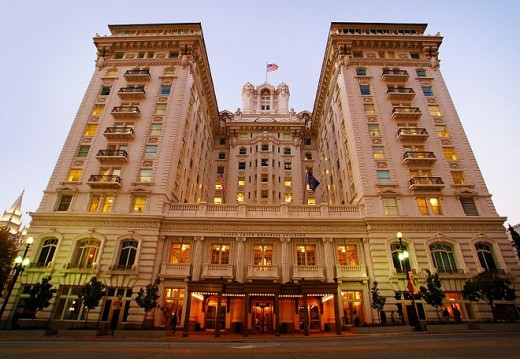
The Joseph Smith Memorial Building
Rounding out the tour of Temple Square is The Joseph Smith Memorial Building. Formerly named the Hotel Utah, this building was built in 1911 as was used as a world class hotel for the distinguished guests and visitors that came to the valley from all over the world. Today, it no longer functions as a hotel but instead houses three restaurants, a genealogy research center, a theater, a chapel for church worship, and several reception rooms. A large statue of Joseph Smith can be seen in the center of the lobby, welcoming all who come to the building.
Guests are welcome to take a tour of the building which are offered Monday-Saturday 9:00 a.m. to 9:00 p.m. for no charge. Also, a free movie is offered in the Legacy Theater, which is currently showing Joseph Smith: Prophet of the Restoration. Tickets are needed for the show, but can be obtained on-line.
Grab a meal, see a show, and experience the splendor of a world class hotel, all at The Joseph Smith Memorial Building.
Joseph Smith Memorial Building
Where to eat at the Joseph Smith Memorial Building
- Utah's Temple Square Dining Establishments at The Joseph Smith Memorial Building
One of the most breathtaking locations you can experience when visiting Salt Lake City, Utah is the fabulous Joseph Smith Memorial Building. This building is the home to The Roof, The Garden Restaurant, and The Nauvoo Cafe, three great places to eat.
Visit Utah's Temple Square in Salt Lake City
I hope that this introduction to the fabulous Temple Square in Salt Lake City Utah, has enticed you to come and visit. If distance prohibits, you can always take the virtual tour by viewing the videos included in this Hub. No matter your religious affiliation, Temple Square is an adventure for anyone who loves history and beauty. From the architecture, to the artwork, to the gardens to the restaurants, Temple Square has something to satisfy everyone.
Come and Visit Temple Square
(801) 539-3100
(801) 240-2299
Salt Lake Temple, Salt Lake Tabernacle, Assembly Hall, Temple Square Visitors Centers
801-240-2584 or 800-346-6044
More Amazing Things to See in Utah
- Mormon Historical Sites in St. George Utah
Six Mormon historical sites to visit in St.George Utah; the St. George Temple, the St. George Tabernacle, the Brigham Young Winter Home, the Dowtown Historic District, the Jacob Hamblin Home, and the Mountain Meadows Massacre Monument. - Tuacahn Amphitheatre in St. George Utah
Tuacahn is a Mayan word which means Canyon of the Gods, and when you experience Tuacahn for yourself you will understand why the name is so appropriate. Tuacahn is an outdoor amphitheater nestled in the valley of 1500 foot, indescribably beautiful, - Bear Paw Cafe in St. George Utah
Have you ever tasted something that you will remember forever? Well, I certainly have, and it was at the Bear Paw Caf in St. George, Utah, of all places! I bet you will never guess in a million years what it was? - Logan Utah Home of Utah Festival Opera
Ranked by Money Magazine as one of the worlds top 20 summer opera festivals, the Utah Festival Opera founded by Logan resident, Michael Ballam graces the historic Ellen Eccles Theatre in Logan, Utah. - Maddox Ranch House in Brigham City Utah
Have you ever tried a Bison steak? How about a shrimp steak? You can get both of these unusual dishes at Maddox Ranch House in Brigham City, Utah. - Sundance Romantic Dining, The Tree Room
Rustic elegance in a casual atmosphere is what you will find when you choose to eat at The Tree Room at the Robert Redford owned Sundance Resort in Sundance, Utah. Situated in the beautiful Wasatch... - A Cool College Hangout The BYU Creamery
Provo, Utah is the home of two major universities making it the ultimate college town. The BYU Creamery is the happening spot to be for some ice cream, some grub, and groceries. If you are lookin for some fresh action, hit up the BYU Creamery. - Six Must See Travel Spots In The Western United States
Information of six travel destinations across the Western United States, including: The Grand Canyon, Lake Powell, Zion National Monument, St. George Utah, Las Vegas, and Disneyland. - Lake Powell Vacation Update Castle Rock Cut Opens Pass
Lake Powell was created as a consequence of the construction of the Glen Canyon Dam, completed in 1966. With 2000 miles of shoreline it is an awesome vacation adventure on the water. Houseboat Lake Powell this summer! - Glen Canyon Dam Flooding The Grand Canyon
This weekend I made a quick trip to one of my favorite places on earth, Lake Powell. As I drove over the bridge that spans the canyon just south of the Glen Canyon Dam, I peered over the edge and saw a...
What other Hubbers had to say about Salt Lake City
- Things to Do in Salt Lake City
Salt Lake City Skyline I spent the better part of my undergraduate years in the Salt Lake City area. Theres a lot to do and see in Salt Lake. If you're an outdoorsman, you have the Wasatch Front right on... - The Best Restaurants at The Gateway in Salt Lake City
Although I live in Hawaii now, my other home is Utah. When you are in Utah for business or pleasure, make sure to visit The Gateway . It covers 30 acres, has over 130 stores, and a huge dancing fountain is... - Top 10 Jobs in Salt Lake City, Utah
(Photos on this page public domain.) Salt Lake City has consistently located in the Top 25 Best Cities for US Jobs listed by Frobes Magazine and other business analysts. In addition, Salt Lake City is... - Top 10 Hot Jobs in Design and Construction for Salt Lake City to 2020
The news in July-August 2010 broadcast that the Construction Industry in Utah and specifically around Salt Lake City was "making a comeback" - increasing in projects undertaken and jobs created - but perhaps...
